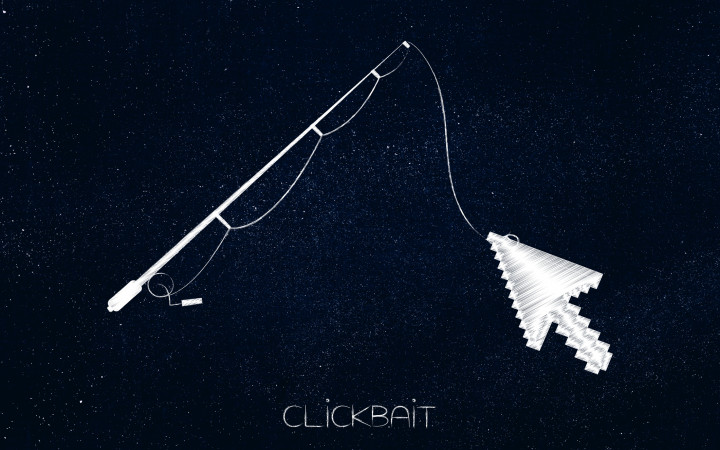Today’s Wonder of the Day was inspired by Michael from Cypress. Michael Wonders, “what is clickbait and how do people use it?” Thanks for WONDERing with us, Michael!
“Ten Tips for Cutting Homework Time in Half—Number 7 Will Shock You!”
“Learn the Fail-Proof Trick for Getting Any Caregiver to Let You Stay Up Past Bedtime.”
“Just One Click Gets You a Free Ice Cream Cone.”
If you spend much time at all online, you’ll see headlines like these sooner or later. They might make you curious. They promise information that seems too good to be true. But think before you click! These articles are more than likely clickbait.
What is clickbait? It’s a misleading headline that draws you in by appealing to emotion or curiosity. After clicking, you’ll quickly realize the article isn’t at all what it claimed to be. It might contain information that’s only slightly connected to the headline. Worse yet, it could be full of misinformation from non-credible sources.
Why would a website publish clickbait? It’s an attempt to make money from advertisers. The more people who visit a website, the more money it can make from ads. This motivates the website to attract more traffic. And this isn’t always a bad thing! Many people work hard to post quality content on their websites so that more people will visit.
However, sites that publish clickbait don’t care about the quality of their articles. The click is all they’re after. That’s why they write sensational headlines to trick people into clicking. Once they’ve directed people to their site, they don’t care if they stay or come back. That’s why clickbait articles are usually unreliable and not well-written.
Even worse, clickbait helps spread fake news. When people see a headline that excites or interests them, they’re likely to share it on social media. They may read the article and not realize it contains misinformation. Some might not even click and read the article. They simply believe what the headline says and want to share it with others. This allows clickbait to travel far and wide, carrying misinformation with it.
How can you avoid clickbait online? Always think before you click. Does that article sound too good to be true? Then, it probably is. It’s also helpful to avoid clicking on headlines that are designed to shock you. You’ll save yourself a lot of wasted time by not clicking on titles that appeal to emotion.
It’s also important to hover over any link before clicking it. This will allow you to see where the link will take you. While a lot of clickbait is harmless, some headlines will take you to dangerous sites. Never click a suspicious link.
Finally, help your friends and family members learn to avoid clickbait. Anyone can be tricked by these articles—even adults. Share what you’ve learned in today’s Wonder to help others stay away from sensational headlines. Also, remember that many social media platforms have the option to report fake news.
Have you ever been tempted by clickbait? Most people have at one time or another. After all, that’s what these headlines are supposed to do! Remember to think before you click and you’ll be more likely to avoid annoying clickbait articles in the future.
Standards: CCRA.L.3, CCRA.L.6, CCRA.R.1, CCRA.R.2, CCRA.R.4, CCRA.R.10, CCRA.SL.1, CCRA.W.2, CCRA.L.1, CCRA.L.2




